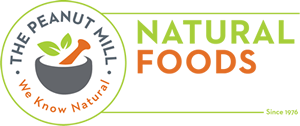The most common type of acne (acne vulgaris) is an inflammatory condition of the sebaceous glands of the skin. The red, elevated areas (pimples) occur most often on the face, neck and back, in teenagers and, to a lesser extent, in adults.
While there is no “cure” for acne, there are some drug-free options that can bring significant improvement. According to Dr Michael Murray, ND, dietary changes are important. Particularly, he recommends avoiding refined sugars, high-fat foods, trans-fatty acids (margarine, shortening), fried oils and milk.
A few natural remedies have been studied for use in acne and found effective:
Tea tree oil
Derived from the Australian Melaleuca alternifolia tree, tea tree oil has long been touted as a potent topical antiseptic with antimicrobial properties. At the Department of Dermatology at Royal Prince Alfred Hospital in New South Wales, Australia, researchers found that tea tree oil compared favourably with benzoyl peroxide, a common topical treatment for acne. The study compared skin ointments with either 5% tea tree oil or 5% benzoyl peroxide in 124 patients with mild to moderate acne. Researchers found that both skin creams had a significant effect in diminishing acne. While the tea tree oil was slower to produce results, it caused fewer side effects.
Silica Gel
The Acne Support Group conducted a study of the effects of a silica gel product on moderate to severe acne. Subjects applied the silica gel (either with or without other doctor-prescribed oral medications) and then completed a questionnaire on skin quality before and after the six-week treatment. Overall, 86% of the subjects reported improved skin conditions, particularly in acne on the chin. In some cases, acne in certain facial locations disappeared completely.
Guggul
This extract of resin from the mukul myrrh tree in India may also be beneficial for acne treatment. Indian researchers found that guggul was as effective as the common acne drug tetracycline in reducing acne. In this study, 20 patients with acne were given 500 mg of tetracycline or 25 mg of guggulsterone twice daily for three months. Both treatment programs resulted in a progressive acne reduction: 65.2% for the tetracycline group and 68% for the guggul group. There were four relapses in the tetracycline group compared to only two in the guggul group.
As the most common skin disorder, the reality is that acne may be an unavoidable part of life for many people. However, key dietary changes and some help from these safe, natural remedies may make a significant impact in helping to avoid acne or at least reduce its severity.
Sources: Encyclopedia of Natural Medicine (2nd Ed) by M Murray and J Pizzorno, Prima:1998; Med J Aust. 1990 Oct 15;153(8):455-8; J Dermatol. 1994 Oct;21(10):729-31; Adv Ther 2001 Mar-Apr;18(2):93-9
